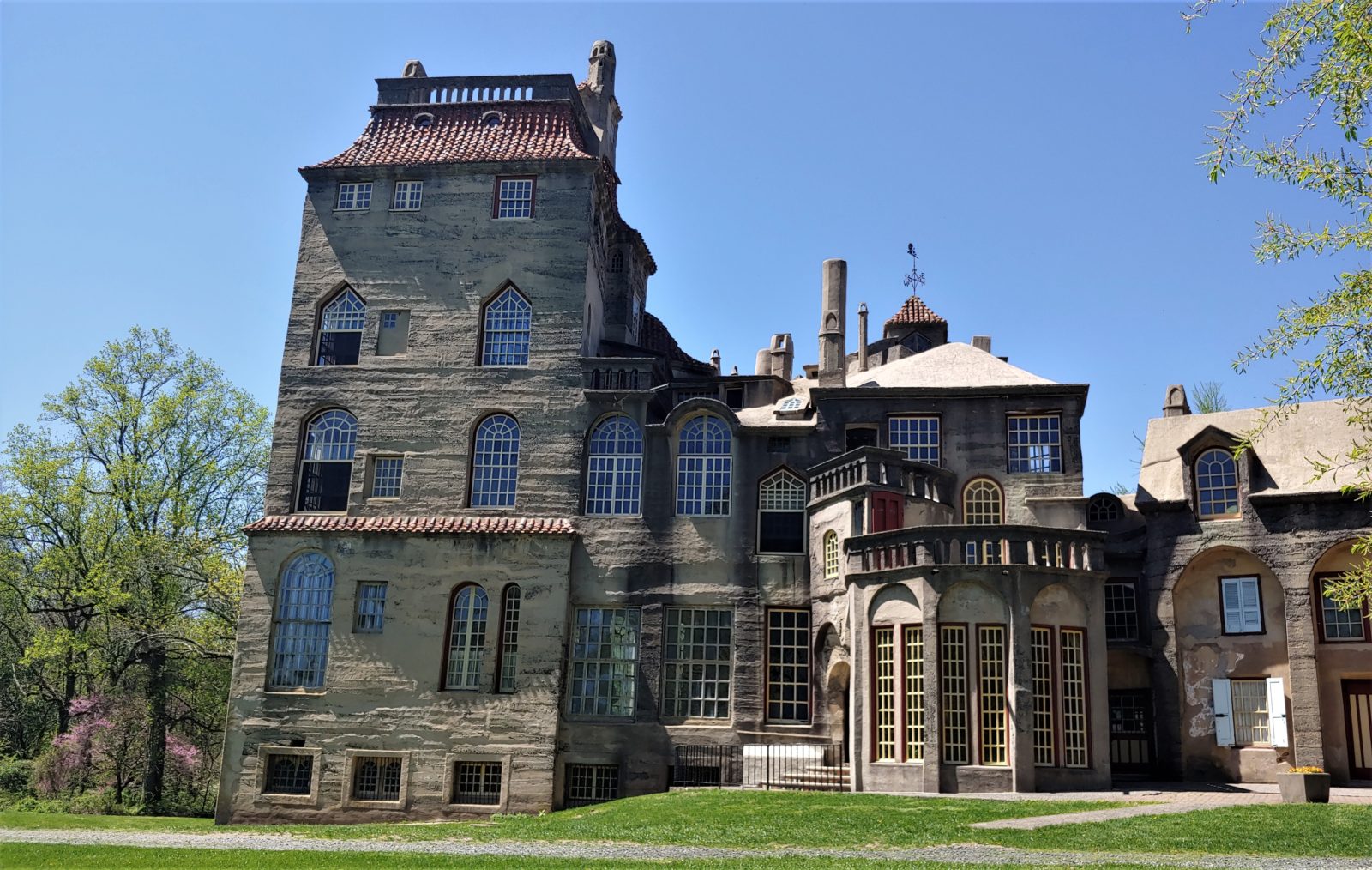The pace of change is speeding up at Doylestown’s fairytale castle.
One of Margaux’s favorite places is Fonthill Castle in Doylestown Township. It’s there she’s princess of the realm and dresses the part. A casual skip dow
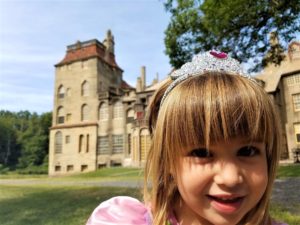
n a forested path behind the 44-room, 6-story castle leads to what everyone calls The Little House in the Woods. Kind of like a tucked-away place where you’d find Hansel and Gretel. To adults, it’s a bit foreboding, isolated, boarded up and covered with decades of graffiti. In the bright eyes of our 5-year-old granddaughter, the swirl of color and caricatures is beautiful. To older folks, the panoply defaces a precious, 250-year-old former farmhouse.
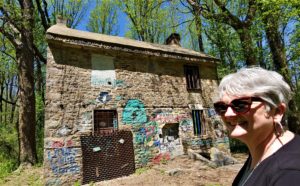
The Little House is about to be cleaned up and restored this summer to become what was intended by Fonthill founder Henry Mercer a century ago: a nature center. Work is underway to clear underbrush that once threatened to strangle the home. By July, a non-chemical power washing of the exterior and reconstruction of the interior will begin. Eventually, an environmental center will rekindle Mercer’s vision of an arboretum planted in the 1930s. The Little House and a tidied up forest will become a place where kids and their families can enjoy an educational outing.
But wait! There’s more.
Fonthill recently marked the opening of a new visitors center. Strides also are being taken to beautify meadowlands fronting the estate off East Court Street. An ash grove grown by Mercer has been pruned and protected from insects, flowering bulbs have been planted, a broad wetland area is being improved with plans for a walking bridge, and the castle’s spring house and driveway entrance posts are being restored.
All of this fulfills the vision of Kyle McKoy, the new site administrator of both Fonthill and nearby Mercer Museum. She led me on a tour of Fonthill including a climb to an open terrace atop the castle’s central tower. One night in 1912 after he moved in, Mercer alarmed Doylestown by lighting a huge bonfire up there to prove his cement home was fireproof. For us on a glorious spring afternoon, the panoramic view was fantastic.
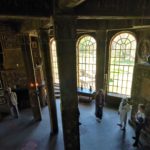
The Bucks County Historical Society manages Fonthill and is engaged in a multi-year effort to make it an historical, ecological, recreational and cultural attraction. The first stage was creating a more accessible visitor’s center inside t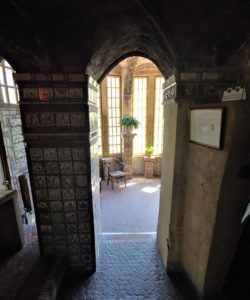 he castle’s detached parking garage. Picture windows were custom-made to fit the archways of the building known for its rooftop terrace. Arriving visitors now enjoy extraordinary views of the castle and grounds in a comfortable s
he castle’s detached parking garage. Picture windows were custom-made to fit the archways of the building known for its rooftop terrace. Arriving visitors now enjoy extraordinary views of the castle and grounds in a comfortable s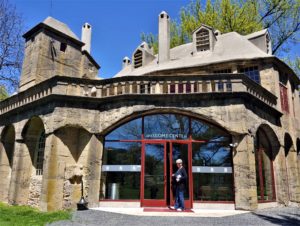 etting with modern fixtures. There tour guides meet each group.
etting with modern fixtures. There tour guides meet each group.
The claustrophobic former visitors center inside the castle has been cleared and reopened as an entry hall to showcase the glory of what Henry Mercer called home. Castle staff is at work reintroducing fabrics typical of when Mercer lived there. “We want to return this house to the feel of the home in which Mercer lived, and that included drapes, tapestries, bedspreads, and other textiles,” said McKoy.
The Little House provides a different challenge. The building dates to 1765, 11 years before Washington crossed the Delaware. The farmer’s home was on 19 acres of open space. It was one of nine contiguous tracts totaling 70 acres purchased by Mercer in 1907 and called Fonthill for its freshwater spring. After constructing his fairytale castle, Mercer turned attention to the farmhouse. In 1916, he installed a concrete roof and made other repairs. He designated the site a bird sanctuary and invited the Doylestown Nature Club to use the building for meetings and exhibitions. Mercer embedded the club’s emblem in mosaic tiles above the front door. He also added tiled letters across the eves, spelling out, “Who learns will love and not destroy the creature’s life, the flower’s joy.”
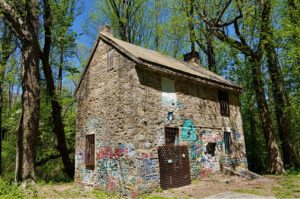
Before his death in 1930, Mercer sketched out plans for an arboretum of native American trees around the house. The nature club planted more than 200 by 1940 – today’s forest. Unfortunately, management lapsed. Hidden by impenetrable woods, interlopers smashed their way inside the house, ripped away the staircase and floorboards, broke all windows and spread graffiti inside and out. Finally in 1990 county government installed an iron grate, steel bars over windows and plugged the doorway with concrete blocks.
Today the Little House has a new future, thanks to volunteers committed to McKoy’s beautification plan for the entire property. Doylestown-area Questers, for instance, are restoring the spring house behind the castle and original Fonthill entrance markers. Ridding the forest of undergrowth eventually will enable visitors to view the Little House from the castle. Energetic Kyle continues to lead the charge. “I want to treasure everything that Henry Mercer treasured. The Little House in the Woods is one of those treasures. And there are so many community organizations offering to help.”
Sources include the Bucks County Historical Society and information from Fonthill site administrator Kyle McCoy, president & executive director of Mercer Museum and Fonthill Castle. She can be reached via email at kmckoy@mercermuseum.org. Information on Fonthill is posted at www.mercermuseum.org/about/fonthill-castle/

